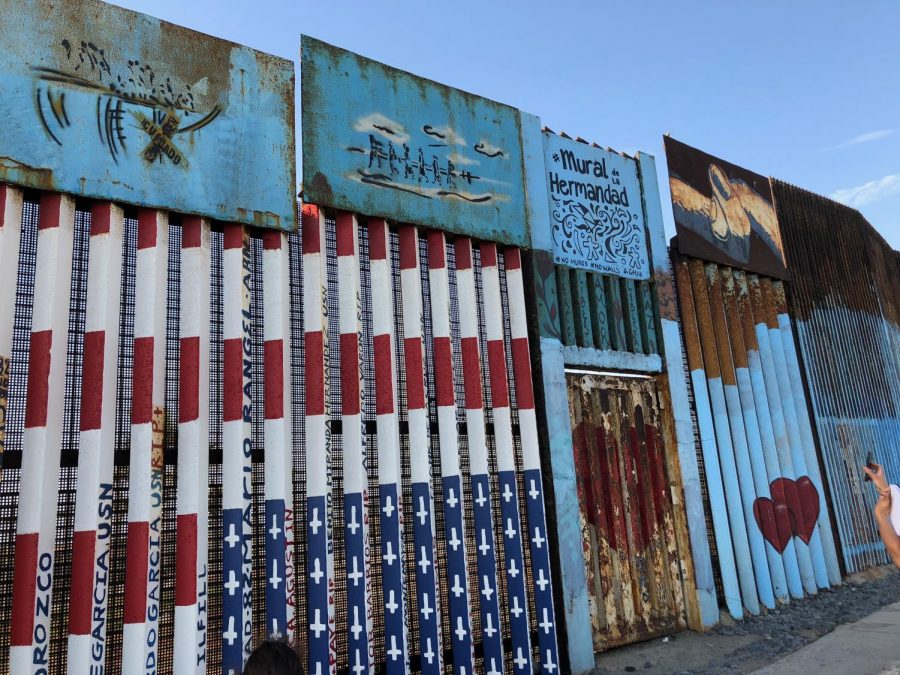Emmy Wenstrup spent the summer exploring the U.S. immigration system
Credit: Emmy Wenstrup
The current border fence along the beach in Tijuana, Mexico ventures out into the Pacific ocean. Some portions of the wall around the beach contain murals and messages, many of which are political. The fence along the beach also tends to be a common tourist attraction for those wanting to examine the infrastructure along the United States-Mexico border.
December 19, 2018
This summer, I attended a 2-week program sponsored by the New York Times that focused on American immigration in California. Throughout these two weeks, 10 other high school students and I participated in a road trip that traveled from San Francisco to San Diego.
In San Francisco, we watched a detained immigrant’s bond hearing and learned about the detention system. In the San Diego area, we visited the border and saw the prototypes for President Trump’s proposed border wall.
For me, the most significant aspect of our trip was our visit to the border city of Tijuana, Mexico. A friend and I were looking at one mural on the Mexican side of the border fence that depicted an American flag painted with names of deported veterans when a man came up to us and introduced himself as one of the men whose name was painted on the fence. After talking to him, he told us that after suffering a severe injury in the Vietnam War, he was sent back to America for treatment–only to be deported after being pulled over while driving.
In Tijuana, we also saw the eight prototypes for President Trump’s proposed border wall. Most striking about these was the fact that they look different from the Mexican side than they do on the American side. For example, one had razor wire pointing out at the Mexican side but was painted sky blue on the American side. During our visit to the prototypes, I was struck by what I perceived as the uselessness of the project. Only one-seventh of immigrants enter the country by crossing the border illegally – most simply overstay their visas. Given this, it seems unlikely that a border wall would significantly diminish the number of immigrants crossing illegally. Moreover, if its goal is to prevent drug smuggling, the cartels have massive networks of underground tunnels which also make an above-land wall ineffective.
During the trip, I also found myself to be blown away by my own ignorance. I tend to think of myself as a well-informed person relative to some of my peers, and still do. Some details regarding detention centers literally made me sick to my stomach, especially because I had not heard any of them before — and wouldn’t have had I not gone on the trip. This new awareness of my ignorance towards thousands of people suffering inspired a personal need to at least try to create change, and I think that starts with education. If more people know about the horrors of the U.S. immigration system, I believe that they too will want to enact change.

